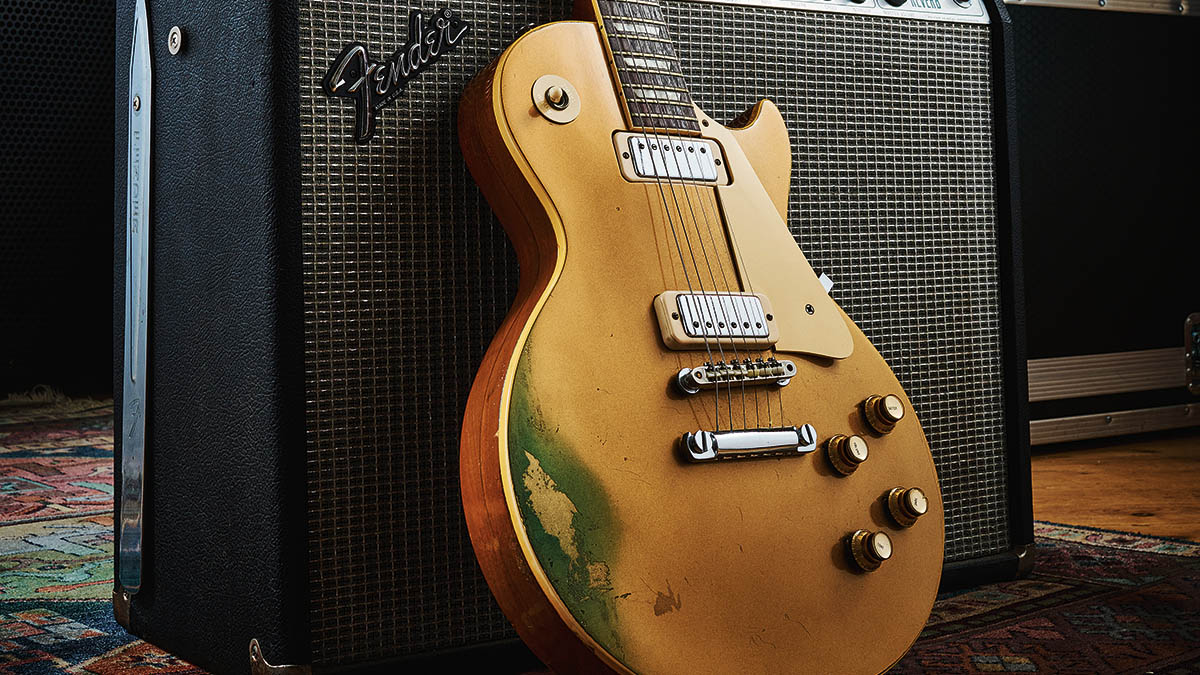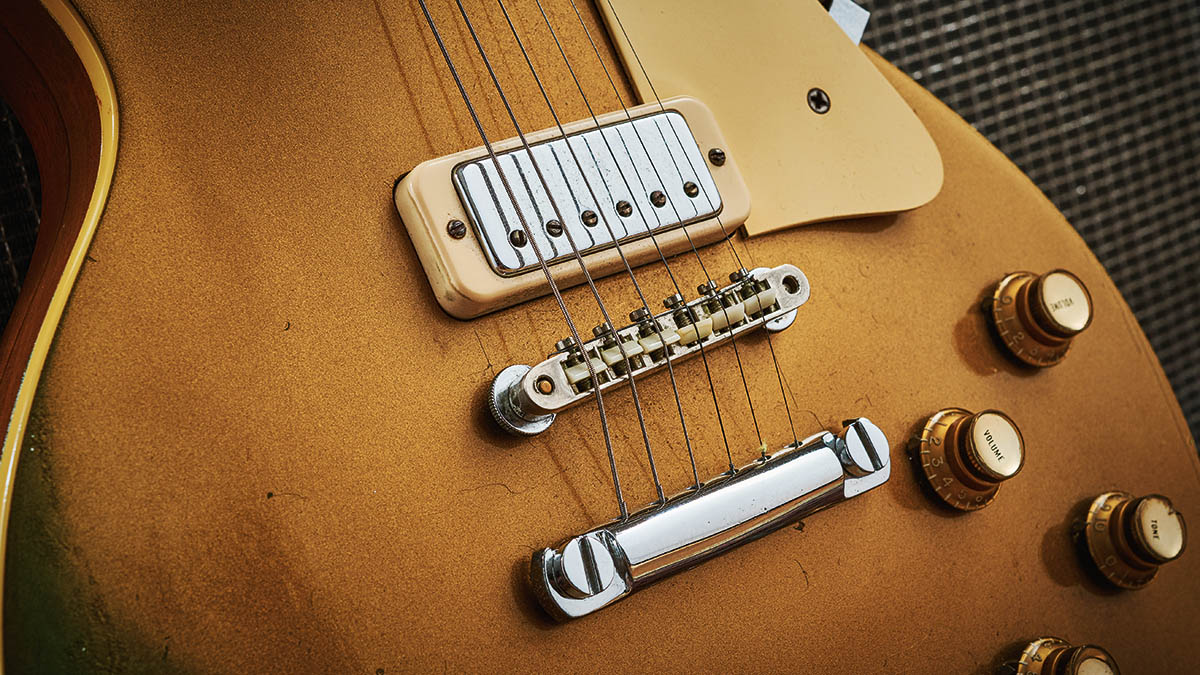
Les Paul’s initial tenure as a Gibson signature artist lasted approximately a decade. Having first lent his name to the firm’s 1952 single-cutaway debut solidbody Goldtop, the Les Paul brand was dropped in 1963 when the entire pointed double-cutaway line was redesignated SG.
Throughout the ’60s, single-cutaway Les Pauls were seen in the hands of many a guitar hero, including Keith Richards, Jeff Beck and Eric Clapton. Consequently, these old-style instruments became highly sought-after.
With a renewed enthusiasm, Les reacquainted himself with Gibson, telling the company’s owners CMI, “The kids own rock ’n’ roll, and it’s just getting started.” Subsequently, with the guitarist back on board, the Les Paul brand was officially reinstated with the release of the dual pickup/maple top Custom and Standard models in 1968.
While the black Custom sported humbuckers, the gold Standard was equipped with P-90s. This Goldtop reissue is a relatively scarce guitar as its single-coil pickups were superseded by mini-humbuckers the following year.
Renamed the Les Paul Deluxe, it made great use of the same pickup design common to Epiphone guitars built during the ’60s, before production relocated to Japan in 1970. Mounted in surrounds made using modified P-90 covers, these smaller ’buckers give the Les Paul Deluxe a brighter tone, which is often described as sounding somewhere between a single coil and a regular-sized humbucker.

Appearing in the 1970 Gibson Guitars: Les Paul Models catalogue, the Deluxe was listed alongside the Custom and Jumbo Flat-Top as a “high impedance” instrument in order to help differentiate it from the newly introduced “low impedance” (pickup) Personal and Professional solidbodies.
“This Les Paul model is ‘deluxe’ in every way. Fine performance and outstanding styling,” reads the entry. “Gold finished carved maple top with laminated mahogany back and neck. Two powerful chrome-plated humbucking pickups… Three-piece laminated mahogany neck with adjustable truss rod. Graceful single cutaway design.”
Pete Townshend is probably the best-known proponent of the Les Paul Deluxe as he used them with the Who throughout 1970s and beyond.
Thin Lizzy’s Scott Gorham, too, famously played the Deluxe, although he later stated, “It was all to do with price, because we just didn’t have enough money at that point for the Les Paul Standard. I got as much out of that as I possibly could for my talent, but as soon as we started to make money I was onto bigger and better things.”
Sales proved phenomenally good after it appeared on Gibson price lists in 1969. Indeed, it was the best-selling Les Paul model throughout the early ’70s by some way, with more than 30,000 shipped between 1970 and 1974 (by comparison, less than 26,000 Les Paul Customs left the Gibson factory in the same period).
However, come 1975, the Deluxe’s popularity waned considerably and it was eclipsed by the Custom in the latter part of the decade. It was eventually discontinued in 1985. Right now, Gibson is offering the Les Paul ’70s Deluxe in ’70s Cherry Sunburst, Dark Wine Red and Gold Top finishes.
The evolution of the Les Paul Deluxe
- 1952: Les Paul Model introduced; single cutaway; dual P-90s; gold finish (SG-style late 1960)
- Early ’60s: Mini-humbucker designed (appears on Epiphone models)
- 1968: Single-cutaway design reintroduced (Les Paul Custom and Standard models)
- 1969: Les Paul Deluxe appears on Gibson price lists
- 1970: Les Paul Deluxe shipped; dual mini humbuckers; ‘pancake’ body; 3-piece mahogany neck; gold finish
- 1971: Cherry Sunburst, Cherry and Walnut finishes
- 1972: Tobacco Sunburst finish (concurrent with Cherry Sunburst)
- 1975: 3-piece maple neck; Wine Red, Natural and sparkle finishes
- 1977: Solid mahogany body (with maple cap)
- 1985: Discontinued







